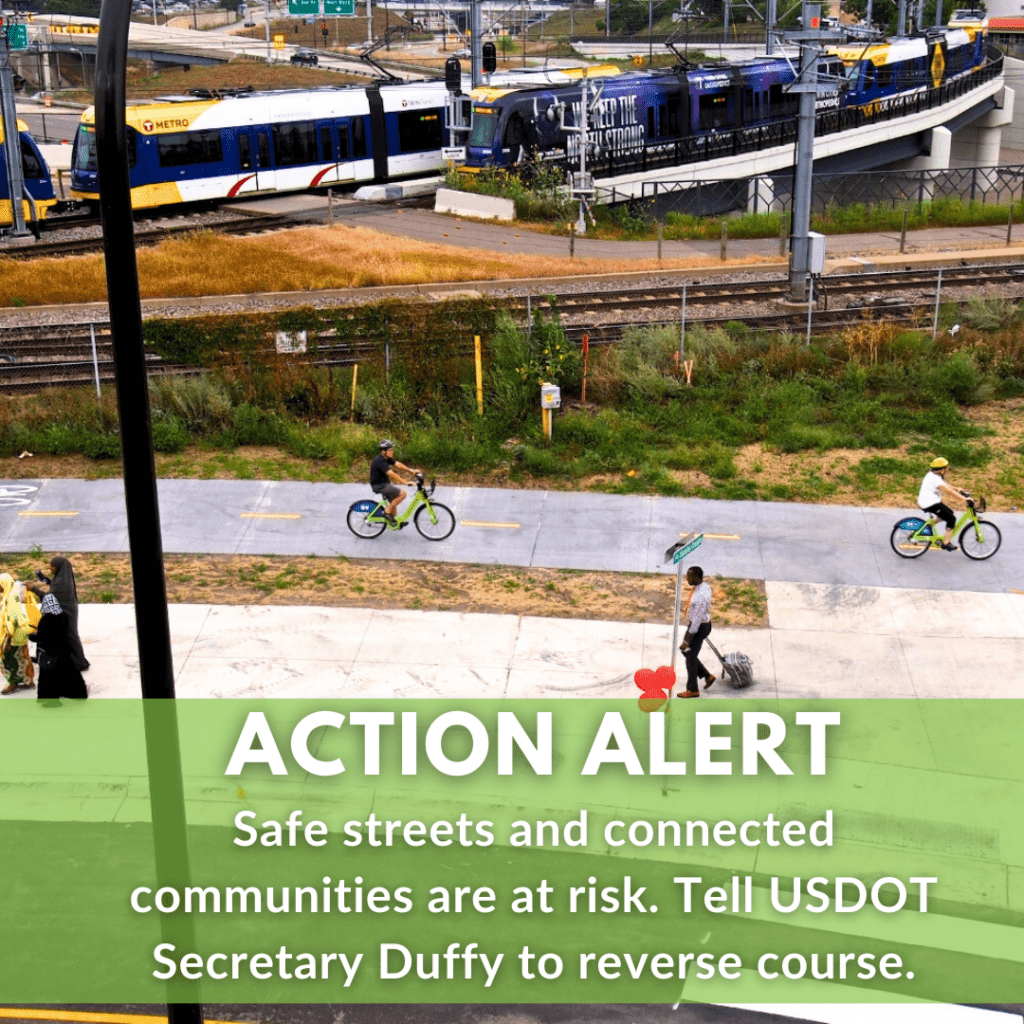Communities Prioritize Secure Streets Over Politics


The U.S. Division of Transportation, beneath Secretary Sean Duffy, has ordered a evaluation of all discretionary grants for inexperienced infrastructure, bike lanes, and tasks that enhance circumstances for communities which have been unfairly marginalized and uncared for, probably slashing funding for essential security enhancements throughout the nation. This determination threatens years of progress in making streets safer for folks strolling, biking, and utilizing public transit.
However whereas the federal authorities backtracks, communities aren’t ready round. Native and state leaders proceed investing in walkability, proving that the demand for safer, extra accessible streets isn’t going away. Whether or not by means of native funding, state grants, or voter-approved measures, cities and cities are taking motion to guard their residents and prioritize mobility past vehicles.
Listed here are a few of the newest walkability wins taking place proper now, as a result of secure streets aren’t up for debate!
Ligonier Township has acquired a $587,000 grant from Pennsylvania’s Multimodal Transportation Fund to assemble sidewalks and a pedestrian bridge, enhancing pedestrian security and infrastructure. State Rep. Leslie Rossi emphasised the significance of such investments in creating safer, extra accessible communities. The funding, administered by the Commonwealth Financing Authority, goals to enhance transportation security, increase financial growth, and improve residents’ high quality of life, making certain Ligonier Township stays vibrant and well-connected.
Knoxville is advancing its Imaginative and prescient Zero initiative, aiming to eradicate site visitors fatalities by 2040, with a number of security tasks underway or deliberate for 2025. Accomplished tasks embody security enhancements at Sutherland Avenue and Tobler Lane, the place a scholar was hit, and enhancements on Chapman Freeway with bike lanes and pedestrian paths. Future tasks embody curb cuts, guardrail replacements, rumble strips, and the Sevier Avenue roundabout. Design-stage tasks just like the Burlington streetscape and Magnolia Avenue upgrades purpose to enhance pedestrian and bike owner security citywide.
The Streets Division is enhancing pedestrian security on Chestnut Avenue in West Philadelphia by putting in concrete pedestrian refuge islands at a number of intersections from forty third to 62nd Streets. These raised medians substitute plastic delineator posts, scale back crossing distances and supply secure staging areas for pedestrians on huge roadways. Development has begun and is anticipated to complete by fall, bettering security in bicycle lane buffer areas.
Santa Barbara County has allotted $7.2 million to enhance bike and pedestrian infrastructure in Isla Vista as a part of its Energetic Transportation Plan (ATP). The challenge, funded by California’s Energetic Transportation Program, consists of including bike boulevards, protected bike lanes, curb extensions, pedestrian crossing lights, and sidewalks. Aimed toward enhancing security and comfort for cyclists and pedestrians, the plan focuses on east-west corridors, with building set to start in 2028.
Charlotte’s Imaginative and prescient Zero initiative is taking form with a concentrate on lowering traffic-related deaths and bettering security. A $400 million transportation bond, authorised by voters in November, allocates $20 million to Imaginative and prescient Zero, funding tasks like enhanced streetlights, pedestrian crossings, and Pedestrian Hybrid Beacons. The initiative targets high-need areas based mostly on information, aiming to deal with rising pedestrian fatalities, which elevated by 77% between 2010 and 2022. Key tasks embody including streetlights to East W.T. Harris Boulevard and putting in over 50 new crosswalks, with plans to boost visibility and connectivity citywide.
To compensate for earlier installments of Walkability Wins, go to our weblog. Have a win? Ship it to us: social@americawalks.org.